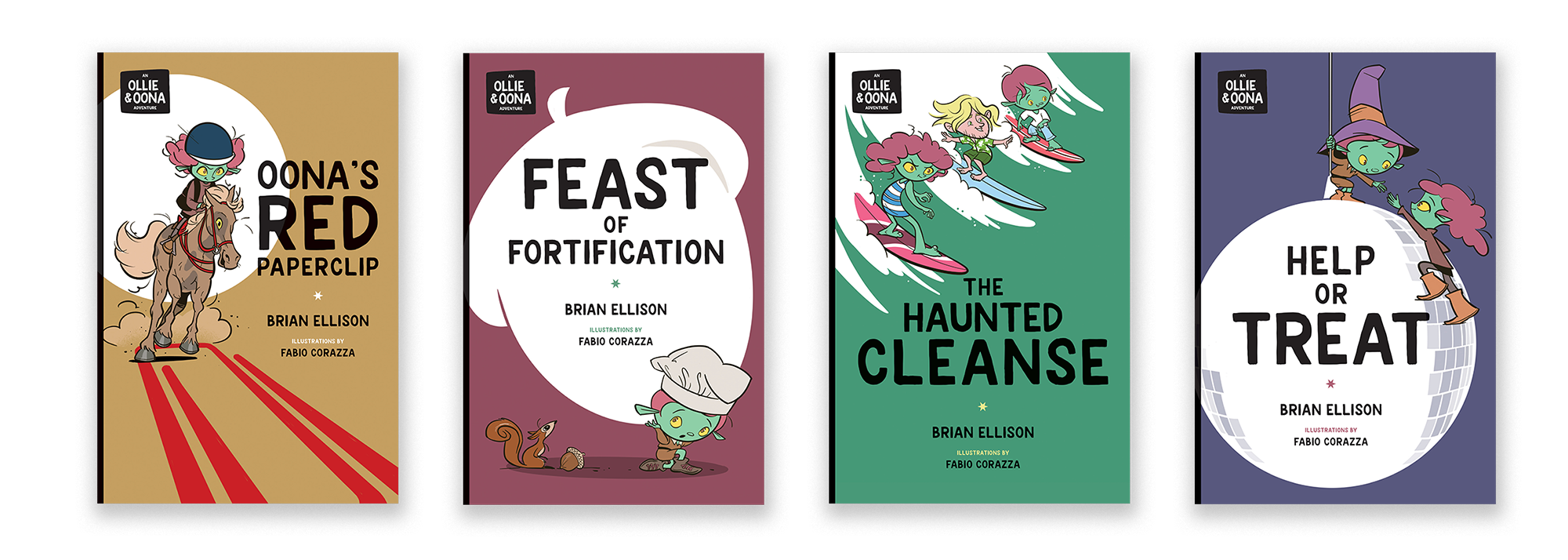
Halloween Tradition… Born.
The year was 2008, I had recently left my comfortable job in landscape architecture and land planning to try my hand at entrepreneurship. I was driving our 2001 Volvo station wagon with my children in the back seat were 6 and 4 years old. At that moment, I decided to pitch them on a concept that, looking back, changed our trajectory as a family:
Over the last few Halloweens our children had discovered the youthful rapture that comes with sugary treats. The ensuing arguments, bargaining and negotiating to get them to give up their candy ratcheted up every Fall. The year before they were convinced to “sell” their candy to the dentist, but after handing over pounds of their sugary loot to only get a handful of change, it was clear by their disgruntled faces that their value of candy was far beyond the money they received in return.
Before it could be suggested that we skip Halloween altogether, or even worse, be “that house” that offered bags of carrots or pencils instead of candy, I stepped in to try to break through the impasse.
Mustering up my courage, I lobbed a question to the back seat.
“Hey,” I asked, looking back at them in the rearview mirror, “have you guys ever heard of the Halloween Goblin?”
THE ORIGIN STORY
Surprisingly, I got a quick answer back from both, “No, what’s that?”
I explained, “It’s a start-up that I heard about, and I thought you guys might want to try it!”
“What does it do?” my son asked.
“Well,” I started, “we sign up, and then we agree to try and collect as much candy on Halloween as we possibly can. Then, we bring it all home and eat as much as we want.”
“At the end of the evening, you give me whatever is left over, and I send it to the Halloween Goblin. When they receive it, they send back a present, but first they weigh it, and that determines the size of the present!”
There was a silence from the backseat that I understood to be skepticism, and it was fair, as they had heard my ideas and stories for years. Presents were a hook though, and finally one of them took the bait.
“Where does the Halloween Goblin get the presents from?” asked Otto.
“Ah,” I replied, “a very good question!”
I continued, thinking quickly, “Most people think that when they ask for something from Santa Claus that he adds it to his list and then the elves make it, but it’s not that easy. You see, they must forecast ahead of time what presents children are likely going to ask for, or they wouldn’t be able to make them before Christmas. It’s called demand forecasting.”
Seeing both looking at me in the rearview mirror, I kept going, “The problem with demand forecasting is that often they are left over with presents that were made, but for one reason or another, there weren’t enough children asking for them. This overstock is what the goblins can buy from The North Pole!”
The questions kept coming, and I kept riffing answers.
I’m going to pause on my story and start it back up in a second post that I will share in short order. I will say, the explanations got longer and more complicated but ended up blending in key concepts of business and entrepreneurship using traditional holiday characters. 14 years later, I have finally been able to start writing not only the complete story of the Halloween Goblins but have also built a much larger vision of a world where the magic of the holiday season brings people back together, restores community connections, and inspires new traditions along the way.
Based on the initial response, my children became more interested. To field these questions, I had to think on my feet and come back with solid, believable answers. We were driving to her hip-hop dance practice, and a question came from my daughter over the backseat:
“Does the Halloween Goblin fly around the world exchanging gifts for candy?”
I looked at her in the rearview mirror as she studied my facial expressions, “No,” I answered, “the Halloween Goblin is currently only operating in select areas of the United States. As they have success, the intent is to expand to additional markets. International expansion is certainly in the future growth plans, but not until they are able to establish within their core markets.”
I don’t know how much a 4-year-old really can grasp market strategy, but she seemed to accept my answer much like talking to a potential angel investor at a pitch night.
There was silence for a few stoplights, and then she had a follow up inquiry:
“So, does the Halloween Goblin fly around the United States exchanging gifts for candy?”
This took a little more explaining, as I wanted her to know that they are goblins, not just one goblin. I shared that The Halloween Goblin is a franchise that allows for there to be numerous goblins that have control of a specific territory based on geography or population. These individual goblins collect for their area and then send the candy to Halloween Goblin’s central facility that sorts the candy, manages gift distribution, and higher-level corporate relations and marketing.
“So, there might be a Boston goblin and a Chicago goblin?” was her next question.
“Ah,” I said with eyebrows raised, “This is a really good question! The size of the territory really depends on the number of participating families in the market. So, there could be a Boston goblin, but there might be a State of Kentucky goblin, or conversely, a South Los Angeles goblin that works separately from the Central LA goblin…”
She nodded in understanding, and then made the comment, “There aren’t many kids that know about the goblin in Madison.”
Clearly, she has been doing some field research and was approaching the time in all our lives when we want to believe our parents but are starting to figure out that they also can be, as my grandfather would put it, “full of bunk.”
Both kids were willing to give it a go that Halloween, so I had to make sure that it went off without a hitch. We went trick or treating as usual around the neighborhood, they came home and ate plenty of candy, and then even went about cataloging and trading the candy between each other, as kids are wont to do. When it came time to go to bed, they each put their candy back in their bags and handed it to me, less a couple of favorites that they were allowed to keep. They brushed their teeth and went off to sleep excited for what the next day would bring- and the pressure was on me to deliver a good first experience with the HG.
I chose some good gifts for them- Phoebe was going to get a stuffed animal. The layup gift for most 4-year-old girls. Otto was, and still is, way into LEGO, so it was just making sure that I got a set that was released prior to the previous Christmas. I added a little extra to the experience by finding wrapping paper from the previous Christmas, so it would corroborate with the idea that they were getting gifts that were overstock from the North Pole. I then also wrote out cards, signed by “HG” that thanked them for the candy and hoped that they liked their gifts.
The next morning, the presents were waiting for them at the breakfast table, and their candy was securely in the back of the car to be taken to my office to be added to the pile in the break room. Both children were excited for their gifts, and our family tradition was born!
SUMMARY / KEY POINTS
The Halloween Goblin Ritual
1. Trick or Treat as usual
Children go out on Halloween night and collect as much candy as they can, enjoying the thrill of the hunt.
2. Eat & Enjoy Together
After returning home, they can eat some of their favorite pieces, trade with siblings or friends, and fully embrace the excitement of their candy haul.
3. Exchange with the Halloween Goblins
Before bedtime, children should collect their candy and give it to the designated responsible adult who will “send it” to the Halloween Goblins. This should be voluntary and should not be taken or “snuck” from the child.
4. Exchange Night
Sometime in the next week, the parent should have a present for the child “from” the Halloween Goblin that is substantially better than the candy that they gave away.
This ritual transforms Halloween from a sugar overload into a magical exchange, teaching children about sharing, value, and delayed gratification while preserving the fun and excitement of the holiday.
Halloween Goblin FAQs
These are the answers that I gave to my kids based on their questions. This list isn’t exhaustive, nor is it set in stone. Make up your own stories and take it whatever direction you
-
A: The Halloween Goblins are the keepers of Halloween and play an important role in the economy of the holidays. They collect leftover candy on Halloween night and leaves gifts in return.
-
A: From overstock at the North Pole—extra gifts the elves made but weren’t requested for Christmas.
-
A: Not yet. The Goblins operate only in select areas of the U.S. Expansion to other markets may come in the future.
-
A: No, it’s a franchise system! Different goblins manage different territories (for example, a Boston Goblin or a Kentucky Goblin). All candy is sent to a central facility in Goblinshire that sorts and stores it, while also grading and redistributing gifts.
-
A: The goblins use it to trade for items with other holiday factions, as they all find different value in them:
Elves love sugary treats
Easter Bunnies want chocolate for chocolate eggs and chocolate shaped bunnies.
Cherubs of St Valentines like Pixie Sticks and Sweet Tarts
Tooth Fairies don’t like candy, but they love that the goblins are getting kids to eat less of it, so they help them get better presents to give to kids who trade.
-
A: The North Pole. Every year, the North Pole must determine what presents kids are going to ask for long before children send in their wish lists. This demand forecasting sometimes is off, so they are left with lots of overstock that sits in warehouses at the North Pole. The goblins by these overstock gifts and get them to you!
Check out our first four books and more at the Ollie & Oona Shop!
Join the Ollie & Oona Adventure Club for updates and VIP discounts.






